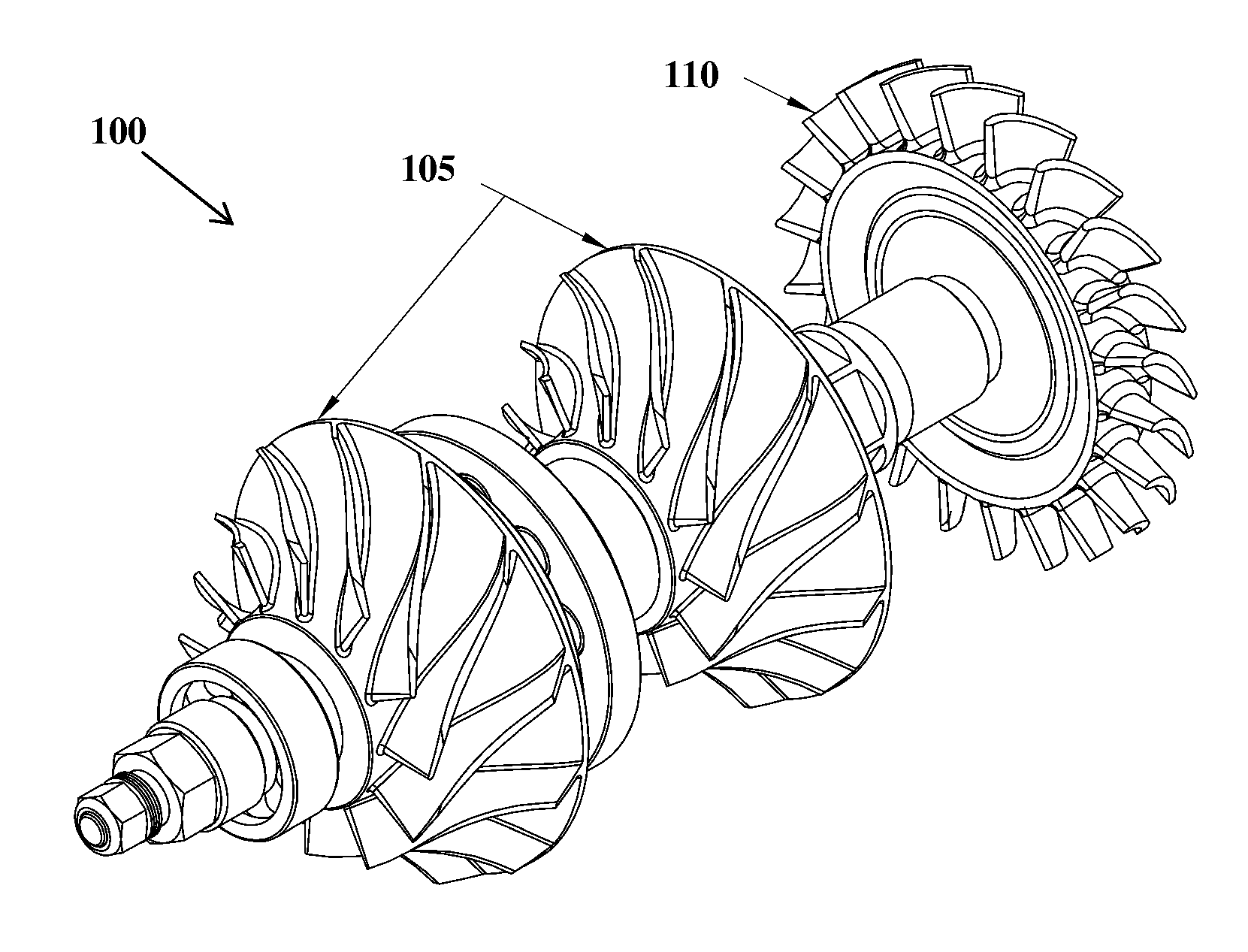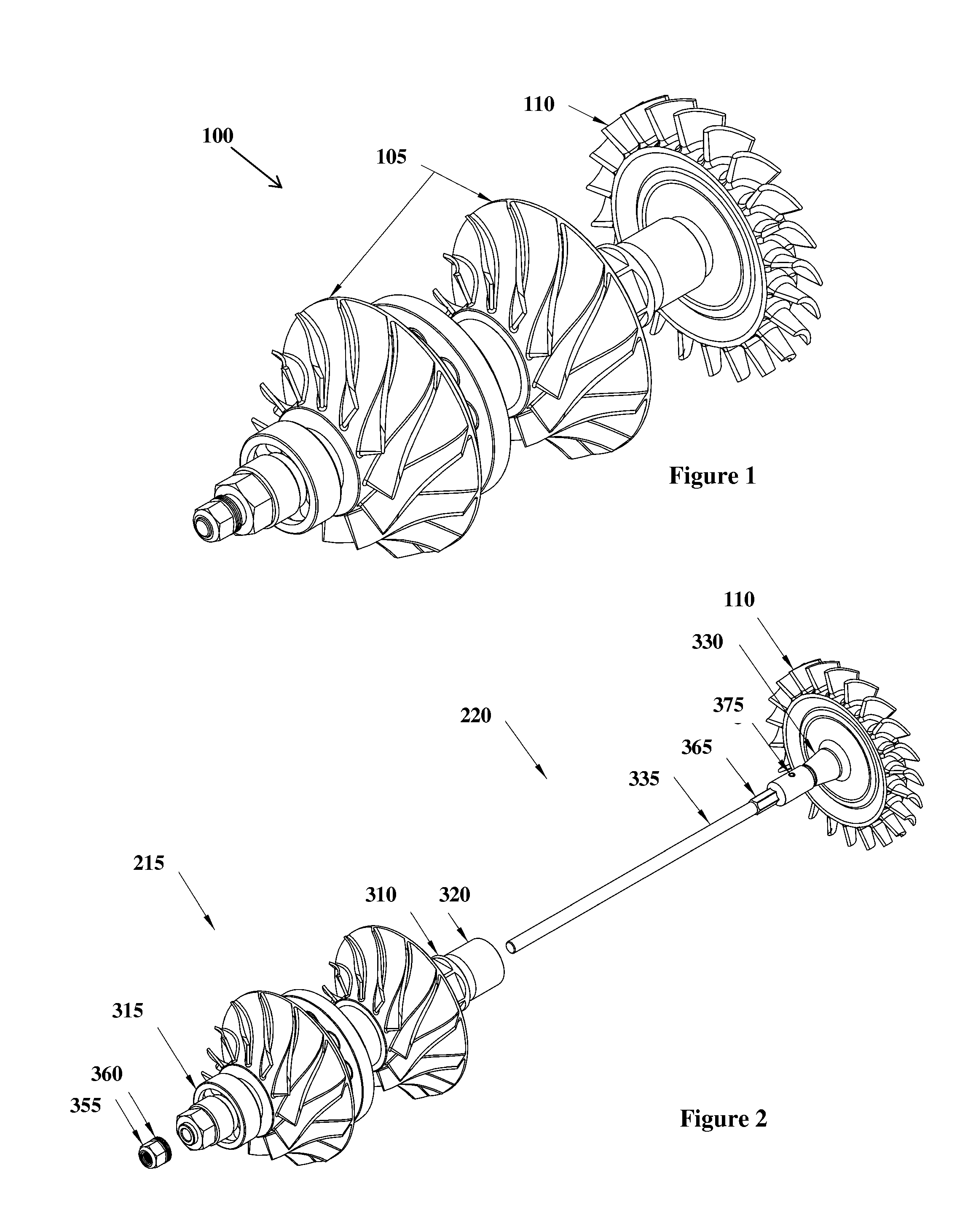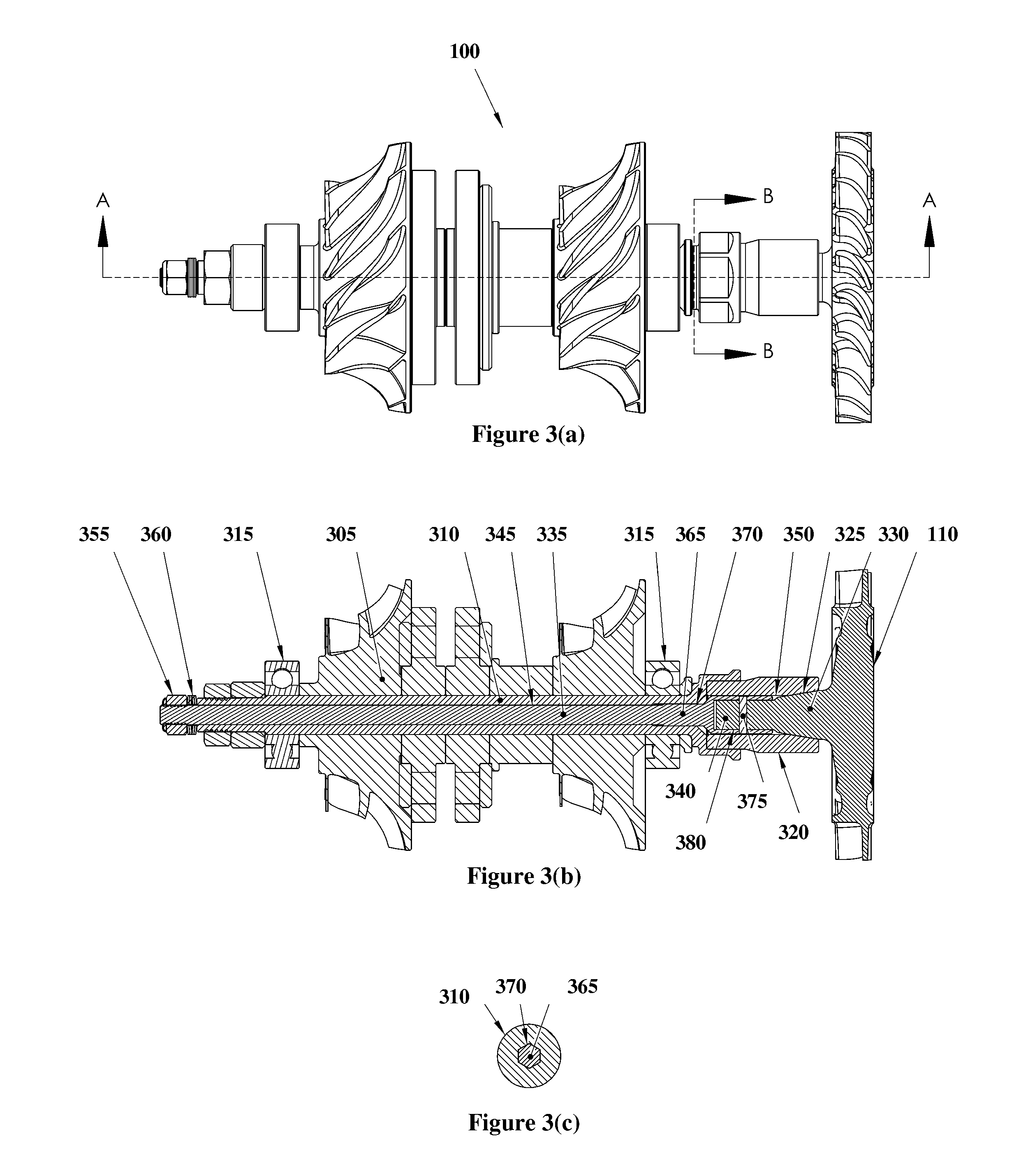Thermally insulating turbine coupling
a turbine and thermal insulation technology, applied in the direction of machines/engines, mechanical equipment, liquid fuel engines, etc., can solve the problems of structural reliability, large propagation rate, and the turbine is not used in the production engine, and achieves precise alignment and concentricity, limit stresses, and easy disassembly/reassembly.
- Summary
- Abstract
- Description
- Claims
- Application Information
AI Technical Summary
Benefits of technology
Problems solved by technology
Method used
Image
Examples
Embodiment Construction
[0032]Referring now to the drawings, in which like numerals represent like elements, aspects of the exemplary embodiments will be described in connection with the drawing set.
[0033]FIG. 1 is an isometric view of an exemplary rotor assembly 100 for a gas turbine engine, in accordance with an exemplary embodiment of the invention. The rotor assembly 100 includes a two-stage compressor impeller assembly 105 and a single stage axial flow turbine rotor 110. However, one of ordinary skill in the art would understand that a rotor assembly with different types, and different quantities, of components could also be utilized so long as there is at least one high speed, high-temperature rotating component such as a turbine, and at least one high speed rotating component that needs to stay comparatively cool, such as a compressor, generator, gearbox, etc. Furthermore, it is immaterial whether the compressor has a single stage or multiple stages, and whether it is centrifugal, axial, or mixed fl...
PUM
 Login to View More
Login to View More Abstract
Description
Claims
Application Information
 Login to View More
Login to View More - R&D
- Intellectual Property
- Life Sciences
- Materials
- Tech Scout
- Unparalleled Data Quality
- Higher Quality Content
- 60% Fewer Hallucinations
Browse by: Latest US Patents, China's latest patents, Technical Efficacy Thesaurus, Application Domain, Technology Topic, Popular Technical Reports.
© 2025 PatSnap. All rights reserved.Legal|Privacy policy|Modern Slavery Act Transparency Statement|Sitemap|About US| Contact US: help@patsnap.com



